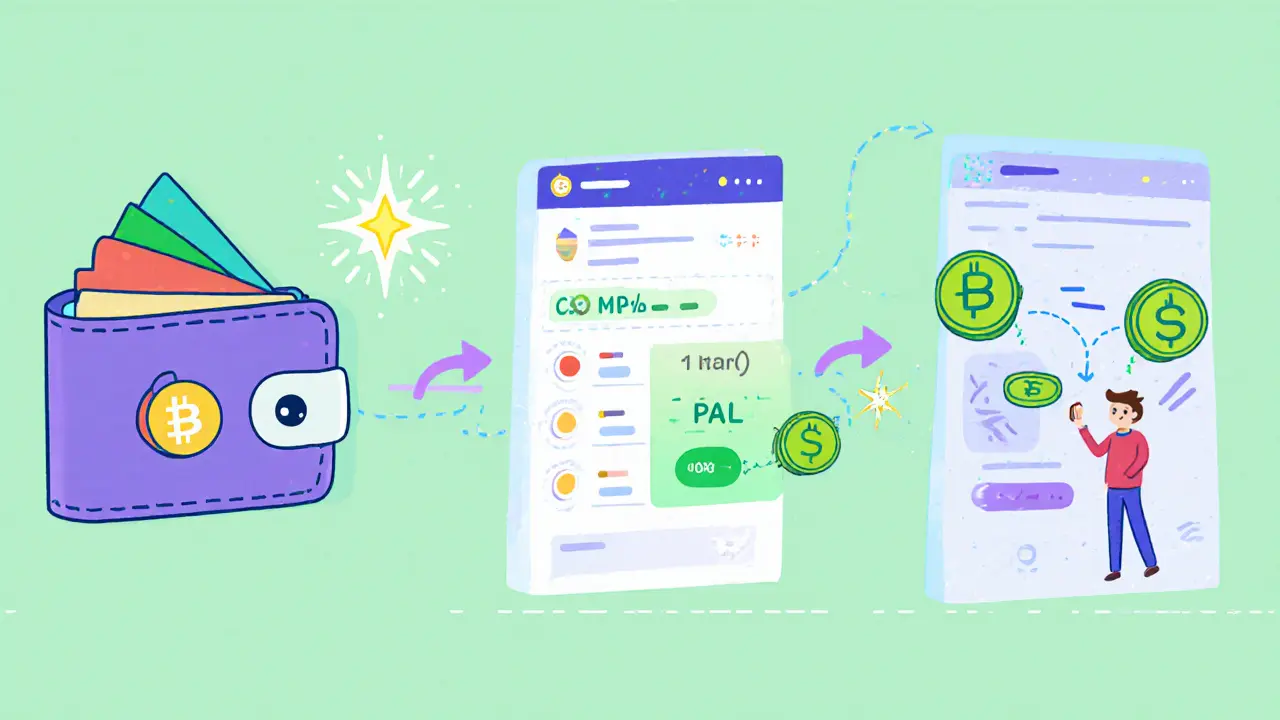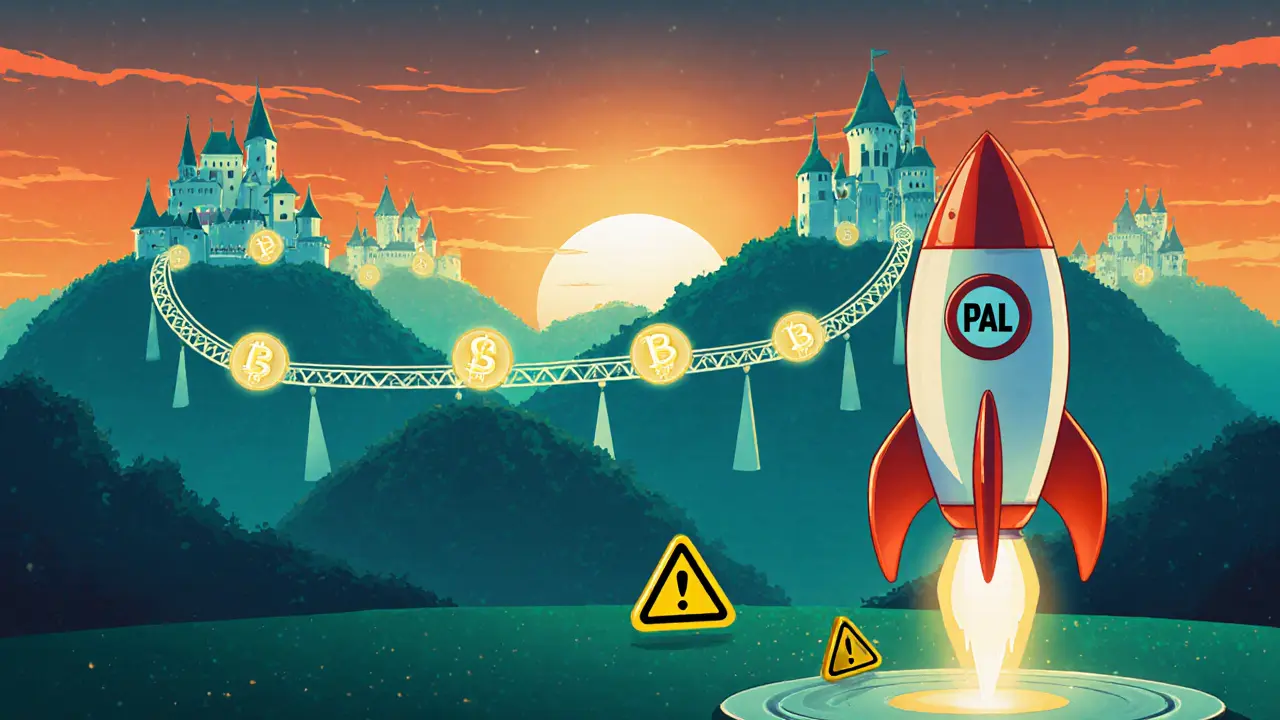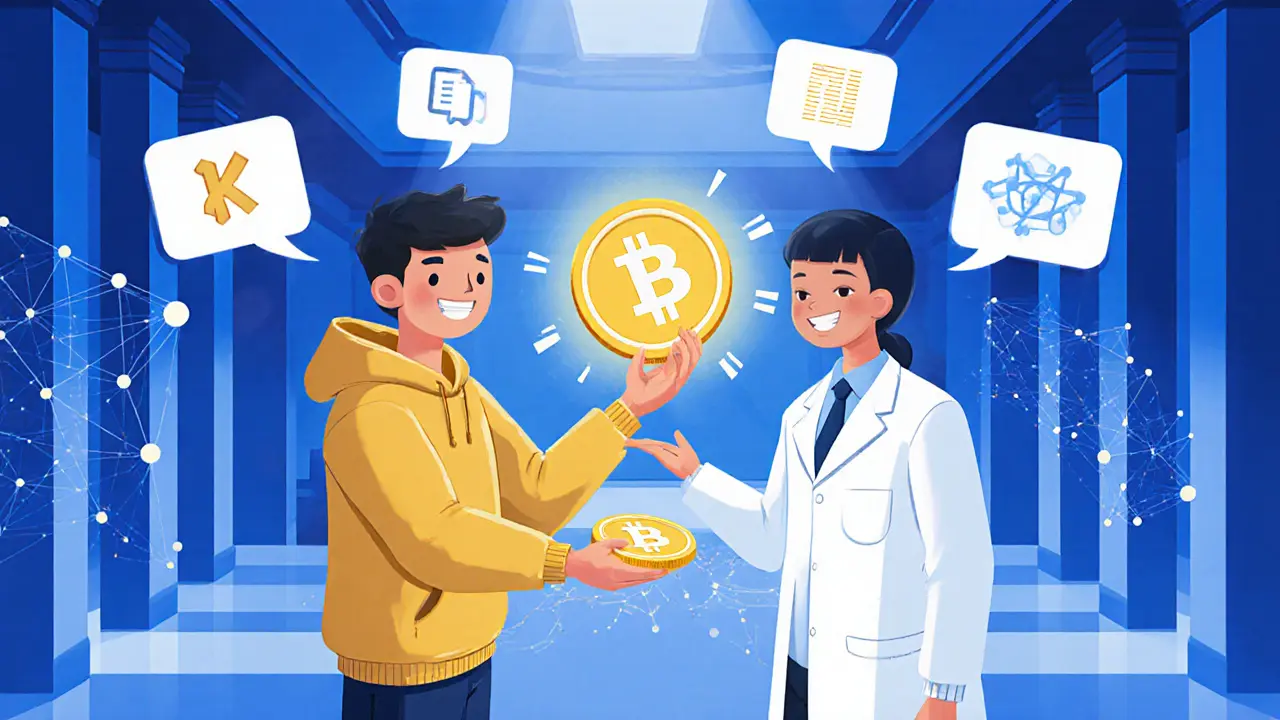PAL Lending Earnings Calculator
How Much Can You Earn?
Estimate your potential PAL earnings by lending your governance voting power.
Enter values above to see your estimated earnings
Key Takeaways
- Paladin (PAL) lets you lend and borrow voting power without giving up DAO participation.
- Its market cap hovers between $1.3 M and $2.2 M, with a circulating supply of ~19.2 M PAL.
- Trade PAL on Bybit, Uniswap v3, Curve (Ethereum) and a few niche DEXes.
- Risks include low liquidity, price volatility, and dependence on broader DAO adoption.
- PAL’s unique blend of governance and yield makes it a niche but potentially high‑growth asset.
When you hear Paladin (PAL) is a decentralized governance‑lending protocol token that lets holders turn voting rights into tradable assets while still participating in DAO decisions, the first question is usually: how does that even work? In plain terms, PAL lets you either loan out the voting power attached to your governance tokens or borrow voting power from someone else. The result is a new kind of money‑lego that mixes the political clout of a DAO with the financial utility of a yield‑bearing asset.
What Exactly Is Paladin (PAL)?
Paladin’s core product is a governance lending protocol that tokenizes voting rights. Instead of locking your DAO tokens in a vote‑only wallet, you can hand over a “voting‑power loan” to a borrower who needs extra weight for a proposal. The borrower pays you back in PAL plus interest, while you still retain the ability to vote later when you retrieve your rights. This non‑custodial design means you never fully surrender control-your assets stay in your own wallet throughout the process.
How the Lending Mechanism Works
- Connect your wallet to the Paladin interface (MetaMask, Coinbase Wallet, etc.).
- Select the governance token you want to lend (e.g., COMP or AAVE tokens).
- Specify the amount of voting power you’re willing to loan and the duration.
- Paladin mints a corresponding amount of PAL as collateral.
- The borrower receives the voting power, uses it in the target DAO, and repays the loan with interest in PAL.
- You reclaim your original voting rights and keep the interest earned.
This flow creates liquidity for tokens that normally sit idle between governance cycles, potentially boosting overall DAO participation.
Tokenomics and Current Market Data
As of early October 2025, PAL trades around $0.0659 on Bybit, though prices can range from $0.0658 to $0.1159 across smaller DEXes. The circulating supply is about 19.18 million PAL, giving a market cap somewhere between $1.27 M and $2.22 M depending on the data source. PAL ranks roughly between #2600 and #4000 among all cryptocurrencies, confirming its niche status.
| Metric | Value |
|---|---|
| Current Price (USD) | $0.0659 |
| Circulating Supply | 19.18 M PAL |
| Market Capitalization | $1.7 M (mid‑range) |
| 24‑hr Volume | $1,200 - $2,100 (varies by exchange) |
| Top Trading Pair | PAL/WETH on Uniswap v3 |

Where to Trade PAL
PAL is listed on four main venues:
- Bybit - centralised exchange that requires Level 1 KYC.
- Curve (Ethereum) - a low‑slippage DEX focused on stable‑coin pairs.
- Uniswap v3 - the biggest on‑chain market for PAL/WETH.
- Balancer - a customizable liquidity pool platform.
If you prefer a non‑custodial route, the Uniswap and Curve routes let you keep your private keys. For larger trades or fiat on‑ramps, Bybit is the most accessible, but remember it asks for identity verification.
Risk Profile and Investor Considerations
- Liquidity:** Trading volume is modest; large orders can move the price sharply.
- Volatility:** As a sub‑$2 M cap token, PAL experiences daily swings of 3 % or more.
- Adoption Dependency:** PAL’s value hinges on DAO and governance‑lending uptake across the DeFi ecosystem.
- Smart‑Contract Risk:** The protocol is still relatively young; a comprehensive audit has not been publicly disclosed.
- Regulatory Landscape:** Governance tokens sit in a gray area; future rules could affect lending mechanisms.
For risk‑averse investors, consider allocating only a small slice of your portfolio and keep an eye on overall DAO activity metrics (e.g., total votes on major protocols).
Paladin vs. Other Governance Tokens
To understand PAL’s niche, it helps to compare it with a few well‑known governance‑centric assets.
| Token | Core Feature | Liquidity | Governance‑Lending? |
|---|---|---|---|
| Paladin (PAL) | Voting‑power loans + PAL yield | Low‑Medium | Yes (native) |
| Compound (COMP) | Interest‑bearing lending market | High | No (separate layer needed) |
| Aave (AAVE) | Flash loans & staking | High | No (no voting‑power tokenization) |
PAL is the only one that builds a dedicated marketplace for borrowing and lending voting rights. That makes it attractive for DAO participants who want to earn yield without sitting out proposals.

Future Outlook and Roadmap Hints
Paladin hasn’t published a detailed roadmap, but its roadmap signals focus on three areas:
- Expanding meta‑governance integration - allowing voting power to be aggregated across multiple DAOs.
- Introducing liquidity‑bootstrapped events that give early adopters extra PAL rewards.
- Launching a suite of DApps to simplify loan creation for non‑technical users.
If these milestones hit, PAL could climb out of the sub‑$2 M cap range, especially as the broader DeFi world leans more into governance optimization.
Quick Checklist Before You Jump In
- Confirm the exchange’s KYC requirements (Bybit needs Level 1 verification).
- Check the PAL/WETH pool depth on Uniswap v3 - aim for at least $500 k liquidity to avoid slippage.
- Read the latest audit report (if available) before locking large voting‑power amounts.
- Allocate no more than 5 % of your total crypto exposure to PAL until you’re comfortable with its volatility.
Frequently Asked Questions
What is the main purpose of the PAL token?
PAL is designed to turn DAO voting rights into a tradable, yield‑generating asset, letting holders earn while staying involved in governance.
How can I earn interest with PAL?
By lending your voting power through the Paladin protocol, borrowers repay you in PAL plus a small interest rate that varies with demand.
Is PAL a good long‑term investment?
It depends on DAO adoption. If more projects need voting‑power liquidity, PAL could see strong upside; otherwise, its small market cap makes it risky.
Where can I store PAL securely?
Use any non‑custodial wallet that supports ERC‑20 tokens, such as MetaMask, Trust Wallet, or Ledger hardware devices.
What are the main risks of using Paladin?
Low liquidity, smart‑contract bugs, and the overall uncertainty of governance token demand are the top concerns.


Paladin’s approach to tokenising voting power is an interesting experiment that could keep DAO participants engaged while generating yield, and I can see how that might appeal to risk‑aware investors.
The premise of turning governance rights into a tradable asset is, at best, a mildly innovative twist on existing DeFi mechanisms, and, at worst, an unnecessary complication that inflates the already bloated token ecosystem. The whitepaper reads like a patchwork of buzzwords strung together without genuine substance, and the lack of a comprehensive audit only deepens my skepticism. While the protocol claims non‑custodial security, the underlying smart‑contract code remains opaque to the average user, inviting potential exploits. Furthermore, the market cap hovering under two million dollars signals a fragile liquidity pool that could evaporate with a single large sell‑off. The tokenomics suggest a modest supply, yet the circulating volume is insufficient to sustain meaningful price stability. In addition, the reliance on DAO adoption creates a chicken‑and‑egg problem that the team appears unwilling to address directly. The roadmap is vague, offering only three bullet points without concrete timelines or milestones. Users are encouraged to lend voting power, but the incentive structure seems skewed toward early adopters rather than the broader community. Moreover, the token’s price volatility, fluctuating between $0.06 and $0.12 within days, makes it a poor candidate for long‑term holding. The comparison chart positions PAL as the sole governance‑lending token, but this novelty does not automatically translate into value. Investors should be wary of the low trading volume on Uniswap, which can cause substantial slippage on modest trades. The protocol’s governance model also raises questions about centralisation, as a small set of borrowers could dominate voting outcomes. Lastly, the lack of regulatory clarity surrounding governance‑token lending adds another layer of risk that cannot be ignored. Overall, PAL feels like a speculative gimmick rather than a robust financial instrument, and I would advise caution before allocating any capital to it.
Paladin certainly introduces a fresh angle to governance participation, however, the practical implications for everyday token holders remain somewhat ambiguous, and the platform would benefit from clearer user guides.
Imagine a world where your DAO clout can be swapped like a collectible card, that’s the vibe PAL is throwing at us, it’s wild, fresh and hints at a new financial playground that blends politics and profit in a way that feels like crypto renaissance.
People need to stop glamorizing this reckless junk, it’s a ponzi disguised as innovation and anyone who buys into PAL is just feeding the hype machine, get real and stop wasting your cash.
The entire governance‑lending narrative feels like a staged distraction; the real agenda behind PAL could be to funnel voting power into hidden hands, and one can’t help but wonder who’s really pulling the strings in the background; the lack of transparency is almost criminal.
PAL is basically a risky niche token.
From a systems‑theory perspective, the tokenization of voting authority represents a meta‑layer of governance abstraction that could, in theory, enhance decentralised decision‑making efficiency while simultaneously introducing emergent dynamics that are difficult to predict.
When you trade PAL on Uniswap, check the pool depth first it’s best to have at least $500k liquidity to keep slippage low.
Wow, this is the most exciting thing I’ve seen in crypto this week, PAL is going to shake the whole DeFi world!
It’s great to see that kind of enthusiasm, just remember to keep a diversified portfolio while exploring new projects.
The potential for meta‑governance integration is fascinating, and if PAL can pull it off we might witness a new era of collaborative DAO ecosystems that empower participants like never before.
Looks like PAL is carving out a niche, low liquidity, high volatility, but also a unique use case, worth keeping an eye on.
America’s crypto scene needs bold moves like PAL, otherwise we’ll always be playing catch‑up with the rest of the world.
Dear community, I respectfully suggest conducting thorough due‑diligence before any investment; a prudent approach will serve all members well.
Upon reviewing the available documentation, I find the lack of rigorous auditing to be a significant oversight that undermines the credibility of the project.
I understand the excitement around new DeFi ideas, and it’s nice to see innovative concepts emerge 🙂
The voting‑power loan mechanism aims to ensure borrowers cannot manipulate proposals by requiring collateralized PAL and imposing interest, which adds a layer of economic disincentive against malicious behavior.
Let’s be real, PAL’s tokenomics are a mess and the hype is just smoke‑and‑mirrors designed to lure gullible investors.
TL;DR: PAL’s governance‑lending model sounds cool, but the real‑world utility is still unproven, so proceed with caution.
The allure of turning political clout into profit is a seductive narrative, yet it masks deeper ethical dilemmas that could erode community trust if left unchecked.
Oh great, another token promising to “revolutionize” voting-because the world clearly needed more crypto‑powered bureaucracy.
Stay focused, do your research, and remember that diversification is the key to navigating volatile assets like PAL.
Looks good overall, but keep an eye on the audit reprot – they’re 🔑 for safety.
Honestly, PAL is just another overhyped trash coin that will dump hard once the hype dies.